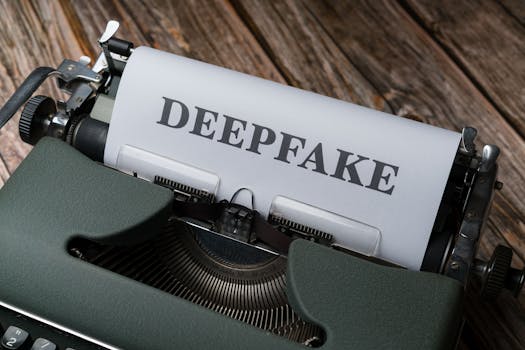Luma AI has unveiled a groundbreaking video model that aims to revolutionize video creation. This new model focuses on 'reasoning' about the physical world, resulting in more realistic and controllable video outputs. Discover how this AI is setting a new standard for video generation.

Luma AI, a company known for its innovative 3D capture and AI technologies, has recently launched a new video model that's generating significant buzz in the AI community. Unlike many existing text-to-video or image-to-video models that often produce surreal or inconsistent results, Luma AI's approach centers around the concept of 'reasoning' about the physical world. This focus on understanding and simulating physical properties promises to deliver more realistic, controllable, and consistent video outputs.
What Makes Luma AI's Video Model Different?
The key differentiator lies in Luma AI's emphasis on incorporating a deeper understanding of physics and 3D space into its video generation process. Traditional models often rely on pattern recognition and statistical correlations, which can lead to artifacts and inconsistencies. Luma AI's model, on the other hand, attempts to 'reason' about how objects interact with each other, how light behaves, and how the camera moves. This allows it to generate videos that are more physically plausible and less prone to common AI video generation errors.
# Reasoning About the Physical World
Instead of simply stitching together images based on textual descriptions, Luma AI's model attempts to understand the underlying physics of the scene. For example, if you prompt it to create a video of a ball bouncing, it doesn't just generate images of a ball moving up and down. It considers factors like gravity, momentum, and elasticity to create a more realistic bouncing motion. This approach results in videos that are not only visually appealing but also adhere to the laws of physics, making them more believable.
# Controllability and Consistency
Another significant advantage of Luma AI's approach is improved controllability and consistency. Users can exert greater control over various aspects of the generated video, such as camera angles, lighting conditions, and object interactions. The model also strives to maintain consistency across frames, ensuring that objects remain in the same location and orientation throughout the video. This level of control and consistency is crucial for creating professional-quality videos that meet specific creative requirements.
Practical Applications and Examples
The potential applications of Luma AI's video model are vast and span across various industries. Here are a few examples:
- Film and Animation: Filmmakers and animators can use the model to quickly prototype scenes, create visual effects, or generate realistic backgrounds. This can significantly speed up the production process and reduce costs.
- Game Development: Game developers can leverage the model to create realistic environments, character animations, and cinematic cutscenes. The ability to generate physically plausible simulations can enhance the realism and immersion of games.
- Marketing and Advertising: Marketers and advertisers can use the model to create engaging product demos, promotional videos, and social media content. The improved controllability and consistency allow for the creation of highly targeted and visually appealing advertisements.
- Education and Training: Educators can use the model to create interactive simulations and educational videos. The ability to visualize complex concepts and processes can enhance learning and comprehension.
# Example: Creating a Realistic Product Demo
Imagine you're a company launching a new coffee maker. Instead of filming a traditional product demo, you could use Luma AI's video model to create a visually stunning simulation of the coffee maker in action. You could specify details like the type of coffee beans, the brewing temperature, and the lighting conditions to create a demo that perfectly showcases the product's features and benefits. The model's ability to reason about the physical world would ensure that the coffee pouring, the steam rising, and the overall visual appearance are realistic and appealing.
# Example: Generating a Virtual Tour
A real estate company could use the model to create virtual tours of properties that don't yet exist. Based on architectural plans and design specifications, the model could generate a realistic walkthrough of the property, allowing potential buyers to experience the space before it's even built. This would be a powerful tool for marketing new developments and attracting buyers.
The Future of AI-Powered Video Creation
Luma AI's new video model represents a significant step forward in the field of AI-powered video creation. By focusing on 'reasoning' about the physical world, the model is able to generate more realistic, controllable, and consistent videos than traditional approaches. As the technology continues to evolve, we can expect to see even more innovative applications emerge, transforming the way videos are created and consumed.
# Tips for Using AI Video Models Effectively
- Be Specific with Your Prompts: The more detailed and specific your prompts, the better the results will be. Provide clear instructions about the desired scene, objects, and actions.
- Experiment with Different Parameters: Most AI video models offer a range of parameters that you can adjust to fine-tune the output. Experiment with these parameters to achieve the desired look and feel.
- Iterate and Refine: Don't be afraid to iterate on your prompts and parameters. It often takes several attempts to achieve the perfect result.
- Consider the Ethical Implications: Be mindful of the ethical implications of AI-generated video, such as the potential for misuse and the spread of misinformation.
Conclusion
Luma AI's innovative approach to video generation is poised to disrupt the creative landscape. By prioritizing physical realism and user control, they are pushing the boundaries of what's possible with AI. As AI video models continue to improve, they will undoubtedly become an indispensable tool for filmmakers, animators, marketers, educators, and anyone else who wants to create compelling visual content.
